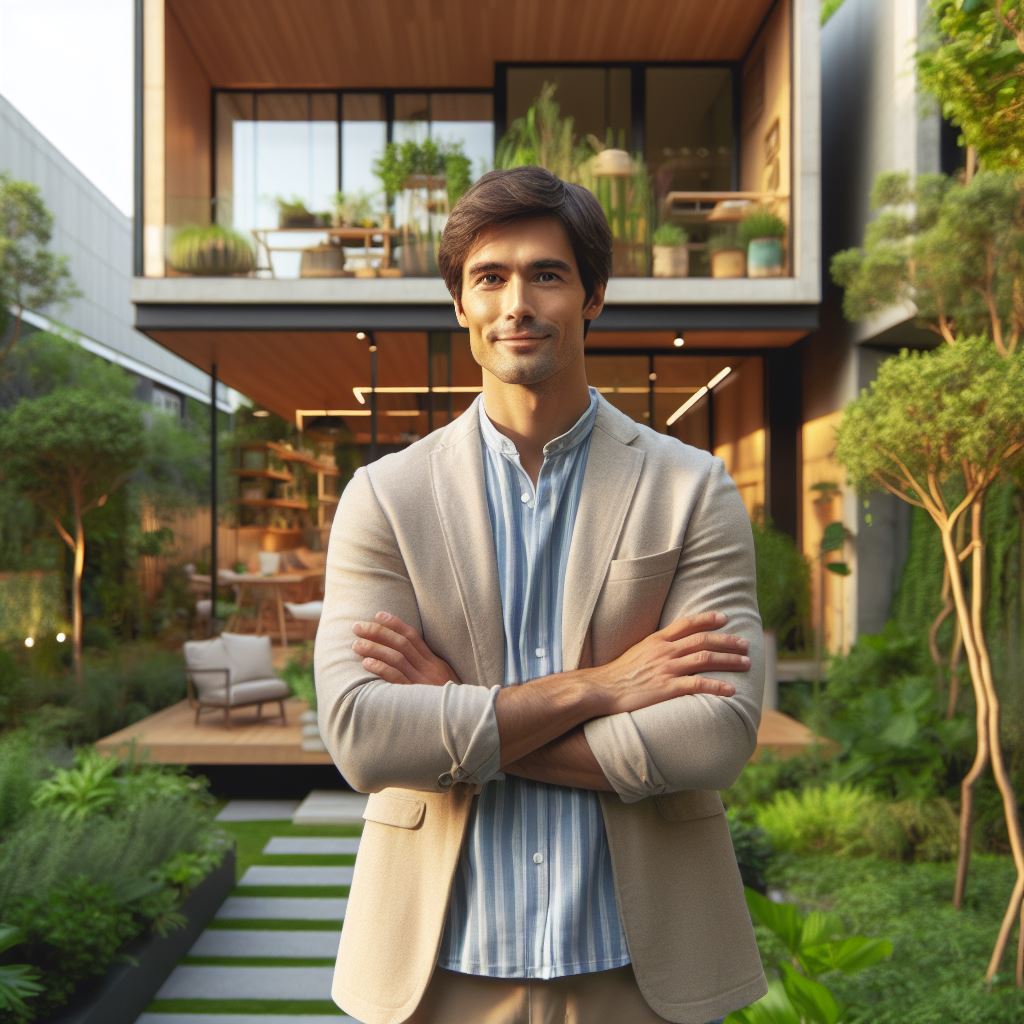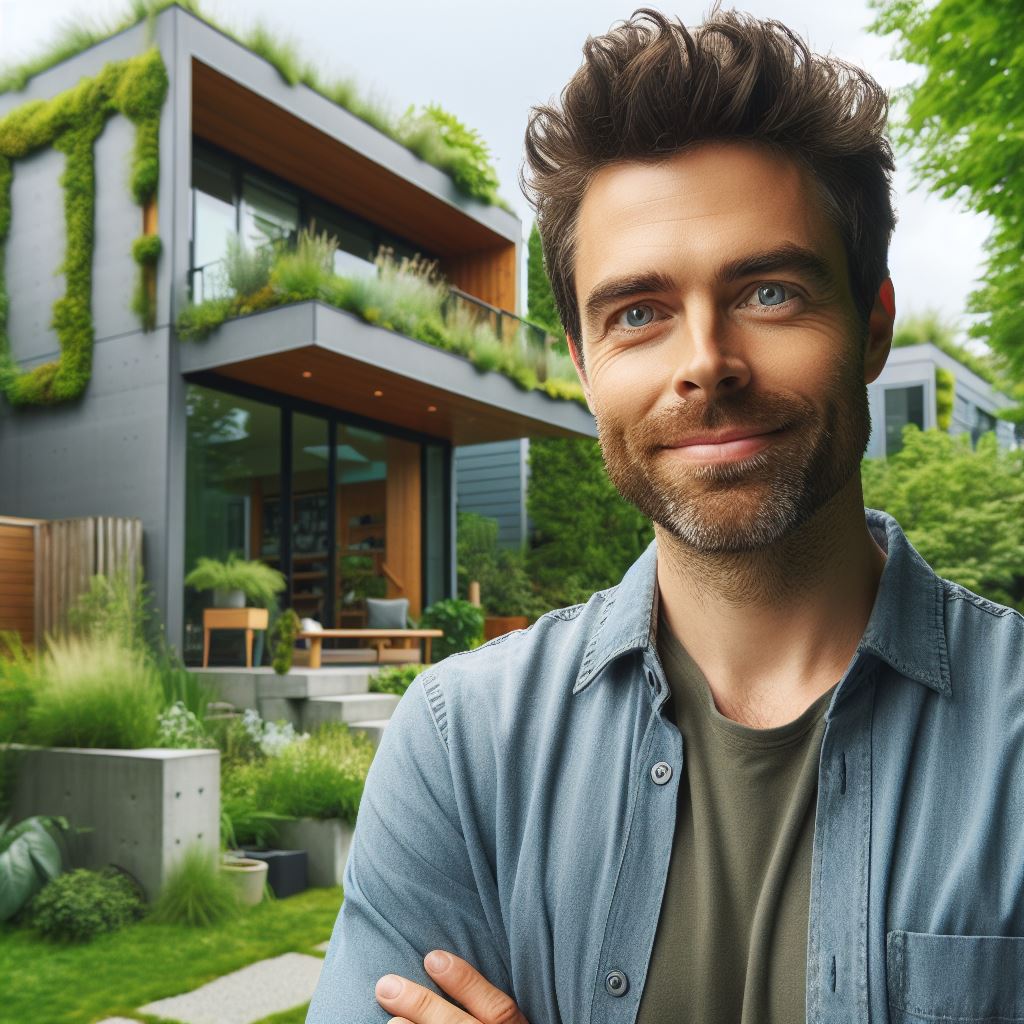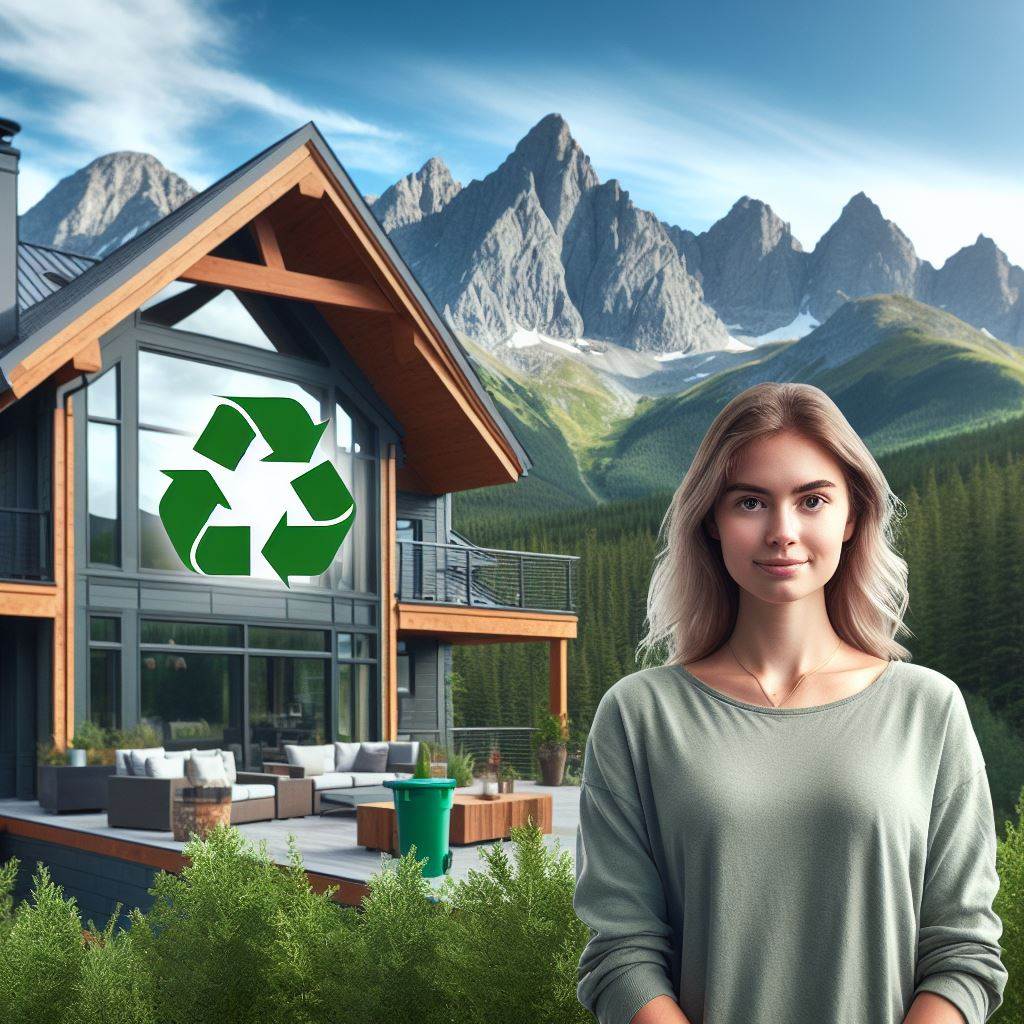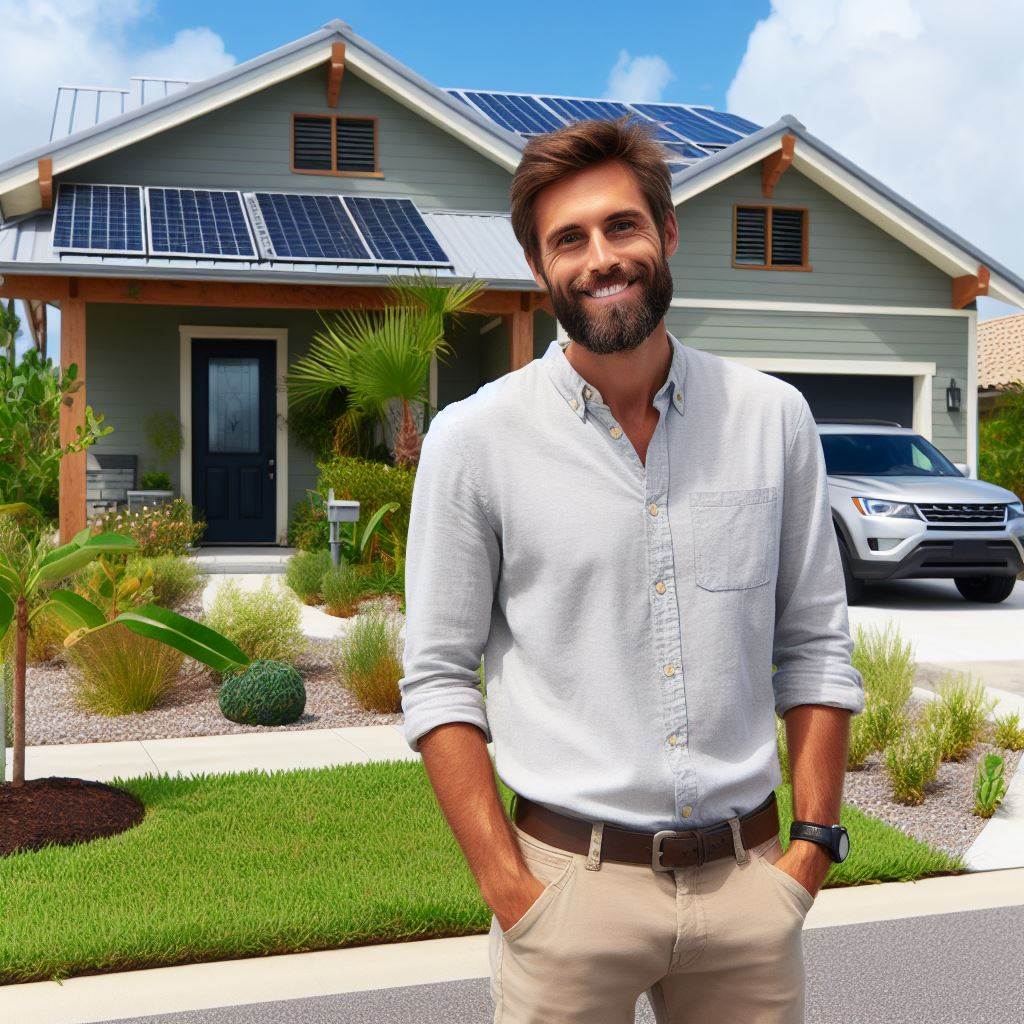Introduction
Eco-urban living is not just a trend; it’s a necessary evolution in our approach to urban development.
It revolves around the idea of incorporating sustainable practices into the fabric of our cities.
This means integrating green solutions for various urban challenges, from transportation to waste management.
By prioritizing environmental consciousness, eco-urban living aims to create healthier, more resilient communities.
Nowhere is the concept of eco-urban living more evident than in the Northeast region of the United States.
Known for its progressive mindset and commitment to sustainability, the Northeast has become a hub for innovative green initiatives.
From renewable energy projects to urban farming initiatives, this region is constantly pushing the boundaries of what it means to live in harmony with the environment.
Its cities serve as models of eco-friendly living, showcasing how sustainable practices can be seamlessly integrated into urban landscapes.
Within the Northeast, green buildings play a particularly significant role.
These structures are designed to minimize their environmental impact throughout their entire lifecycle.
From construction materials to energy usage, every aspect of a green building is carefully considered to reduce its carbon footprint.
This is especially important in a region like the Northeast, where densely populated cities can contribute to high levels of pollution and resource consumption.
Green buildings help to mitigate these issues by promoting energy efficiency, reducing waste, and creating healthier indoor environments.
As the effects of climate change become more pronounced, the importance of green buildings in the Northeast—and beyond—cannot be overstated.
They represent a crucial step towards a more sustainable future, where our built environment works in harmony with the natural world rather than against it.
Green Building Trends in the Northeast
Statistics on the growth of green buildings
The Northeast has seen a significant increase in the number of green buildings in recent years.
According to data from the US Green Building Council, the region has experienced a 43% growth in green construction.
This growth is primarily driven by the increasing demand for sustainable and eco-friendly buildings.
The Northeast has emerged as a leader in green building practices, surpassing other regions in the country.
Introduction of LEED certification
LEED (Leadership in Energy and Environmental Design) certification has played a crucial role in promoting green construction.
LEED is a globally recognized rating system that certifies buildings for their sustainability and environmental performance.
The Northeast has witnessed a substantial adoption of LEED certification across various construction projects.
This certification ensures that buildings are designed and built with energy efficiency, water conservation, and reduced carbon footprint in mind.
Government initiatives and incentives for eco-friendly construction
The Northeastern states have implemented several government initiatives and regulations to encourage eco-friendly construction.
Government bodies offer financial incentives, tax breaks, and grants to developers and building owners who adopt green building practices.
These initiatives aim to promote sustainable development and reduce the region’s overall environmental impact.
The government’s support has contributed significantly to the growth of green buildings in the Northeast.
Public awareness and demand for sustainable living
The general public in the Northeast has become increasingly aware of the importance of sustainable living.
There is a growing concern about climate change and the need to reduce carbon emissions.
As a result, people are actively seeking out green buildings that offer energy efficiency, lower operating costs, and healthier indoor environments.
The demand for sustainable living spaces has created a market for eco-friendly construction in the Northeast.
The combination of public awareness and government incentives has created a positive environment for the growth of green buildings in the region.
In essence, the Northeast has experienced a remarkable surge in green building trends.
The region has witnessed a substantial increase in the number of green buildings, driven by public demand and government initiatives.
The introduction of LEED certification has also been instrumental in promoting sustainable construction practices.
With ongoing efforts to raise awareness and incentivize eco-friendly building, the Northeast is set to continue its leadership in green building practices.
Read: Green Investing: Solar Homes in the Southwest
Sustainable Architecture in the Northeast
Examples of innovative sustainable architecture projects
In the Northeast, there are several remarkable examples of sustainable architecture projects that showcase innovative design and environmental consciousness.
One such project is the Brooklyn Botanic Garden Visitor Center located in New York.
This building incorporates numerous sustainable features and has become a model for green architecture in the region.
It boasts a green roof, which helps to reduce stormwater runoff and provides insulation, reducing energy consumption.
The center also utilizes natural ventilation and daylight harvesting techniques, reducing the need for artificial lighting and air conditioning.
Another inspiring project, though not located in the Northeast, is Dockside Green in British Columbia.
This sustainable development has served as an inspiration for many architects and urban planners in the region.
With a focus on self-sufficiency, Dockside Green incorporates a variety of innovative features including on-site wastewater treatment, rainwater harvesting, and urban agriculture.
The project also promotes alternative transportation options by providing ample bike lanes and pedestrian-friendly paths.
The integration of renewable energy sources
Renewable energy sources play a crucial role in sustainable architecture projects, particularly in the Northeast where the climate can be challenging.
Architects and designers have been incorporating various renewable energy technologies to reduce the carbon footprint and reliance on non-renewable energy sources.
Solar panels are a popular choice in the Northeast due to the region’s abundance of sunlight.
By harnessing solar energy, these panels can generate electricity and reduce the demand for traditional power sources.
The integration of solar panels in buildings not only lowers energy costs but also contributes to a greener environment.
Similarly, wind turbines have gained popularity in the Northeast as they can harness the strong winds prevalent in the region.
These turbines convert wind energy into electricity and can be integrated into urban landscapes without causing significant disruptions.
By utilizing wind power, buildings can reduce their dependence on fossil fuels and further promote sustainable living.
Another renewable energy source that has gained traction in the Northeast is geothermal energy.
Geothermal systems tap into the earth’s natural heat and can be used for heating, cooling, and generating hot water.
By utilizing geothermal energy, buildings can significantly reduce their reliance on traditional heating and cooling systems, thereby reducing energy consumption and greenhouse gas emissions.
In fact, sustainable architecture in the Northeast showcases innovative design and a strong commitment to environmental consciousness.
The Brooklyn Botanic Garden Visitor Center in New York and Dockside Green in British Columbia are exemplary projects that prioritize sustainability and set a precedent for future developments.
Furthermore, the integration of renewable energy sources such as solar panels, wind turbines, and geothermal systems contributes to the region’s efforts in reducing carbon emissions and promoting a greener future.
Read: Eco-Friendly Real Estate in the Pacific Northwest
Sustainable Materials and Construction Techniques
Use of recycled and environmentally friendly materials
Incorporating materials that are recycled or environmentally friendly in construction can significantly reduce a building’s environmental impact.
By using recycled materials like reclaimed wood or recycled steel, it reduces the need for virgin resources and minimizes waste.
Implementing sustainable materials and construction techniques in eco-urban living is crucial for creating environmentally conscious cities.
By using recycled and environmentally friendly materials, buildings can contribute to reducing waste and preserving natural resources.
Green roofing and urban gardening
Green roofs, also known as living roofs, are a sustainable construction technique that involves planting vegetation on the roof of a building.
These roofs provide benefits like reducing stormwater runoff, improving air quality, and creating insulation.
Additionally, urban gardening can be incorporated into the building design to provide fresh produce and green spaces in urban areas.
Green roofing and urban gardening play a vital role in improving air quality, reducing the urban heat island effect, and promoting biodiversity.
These features also provide residents with access to green spaces and fresh produce, enhancing the quality of life in urban areas.
Rainwater harvesting and greywater systems
Rainwater harvesting involves collecting and storing rainwater for later use, which reduces the reliance on municipal water supplies.
Greywater systems, on the other hand, recycle water from showers, sinks, and laundry for non-drinking purposes like toilet flushing or irrigation.
Rainwater harvesting and greywater systems are effective ways to conserve water and reduce the strain on local water supplies.
By utilizing rainwater for non-potable purposes and recycling greywater, buildings can decrease water demand and promote water conservation.
Importance of insulation and energy-efficient windows
Proper insulation helps regulate indoor temperature, reduces energy consumption, and minimizes heating and cooling costs.
Energy-efficient windows, such as double-pane or low-emissivity windows, improve insulation and reduce heat transfer, allowing for more natural light without increasing energy demand.
Insulation and energy-efficient windows are essential for achieving energy efficiency in buildings.
Proper insulation helps maintain comfortable indoor temperatures and reduces the need for constant heating or cooling, resulting in reduced energy consumption and lower utility bills.
Energy-efficient windows minimize heat transfer while maximizing natural light, reducing the reliance on artificial lighting and HVAC systems.
In short, sustainable materials and construction techniques are key elements in eco-urban living.
Incorporating these practices not only helps mitigate environmental impact but also creates healthier and more livable cities for future generations.
Read: New Investment Hotspots in the US

Benefits of Green Buildings in the Northeast
Reduced energy consumption and lower utility bills
Green buildings in the Northeast are designed to be energy-efficient, resulting in reduced energy consumption.
As a result, residents experience lower utility bills, helping them save money in the long run.
Improvement of local air quality and overall health
Green buildings in the Northeast utilize materials that are non-toxic and have low emissions.
This helps improve the local air quality, reducing the risk of respiratory diseases and promoting overall well-being.
Reduction of greenhouse gas emissions
Green buildings in the Northeast are designed to minimize greenhouse gas emissions.
They utilize renewable energy sources and energy-efficient practices, resulting in a significant reduction of carbon footprint.
This contributes to the global effort of combating climate change and creating a sustainable future.
Positive impact on the surrounding ecosystem
Green buildings in the Northeast often incorporate sustainable landscaping and green spaces.
This promotes biodiversity and provides habitats for native species, contributing to the preservation of the local ecosystem.
Additionally, green buildings reduce stormwater runoff and help in water conservation, preserving natural resources.
Overall, green buildings in the Northeast offer numerous benefits to both individuals and the environment:
- Reduced energy consumption leads to lower utility bills, providing financial savings for residents.
- Improved air quality promotes better health and well-being among residents.
- The reduction of greenhouse gas emissions helps combat climate change and create a sustainable future.
- The positive impact on the surrounding ecosystem contributes to biodiversity and the preservation of natural resources.
Considering these benefits, it is evident that green buildings play a vital role in eco-urban living in the Northeast.
They not only provide a sustainable and healthy living environment but also contribute to a greener and more resilient future for the region.
Therefore, it is crucial to continue supporting and promoting the development of green buildings in the Northeast, fostering a more sustainable and resilient urban landscape.
Read: Seattle Market: Navigating Tech Boom Effects
Challenges and Future of Green Buildings in the Northeast
Cost considerations and financial barriers
- High upfront costs deter individuals and organizations from investing in green buildings.
- Lack of financial incentives and subsidies make it difficult to offset the initial expenses.
- Limited access to affordable financing options poses a major challenge for implementing green building projects.
- Overcoming cost considerations requires innovative financing models and long-term cost-benefit analysis.
Developing more affordable green housing options
- Increasing demand for affordable housing necessitates the development of affordable green housing options.
- Integrating energy-efficient systems and renewable energy sources can lower the overall costs over time.
- Collaborating with developers, architects, and policymakers can facilitate the creation of affordable green housing projects.
- Implementing innovative construction techniques and materials usage can further reduce costs and increase affordability.
Expanding green building codes and regulations
- Strengthening existing green building codes and regulations can promote sustainable practices.
- Implementing mandatory standards ensures that all new constructions adhere to green building principles.
- Encouraging retrofits of existing buildings with energy-efficient features can extend the impact.
- Regular updates and stricter enforcement of green building regulations can drive the adoption of sustainable practices.
Potential for increased collaboration and knowledge sharing
- Building a network of stakeholders, including government agencies, industry professionals, and community organizations, can foster collaboration.
- Creating platforms for knowledge sharing such as conferences, workshops, and online forums can facilitate learning and innovation.
- Sharing success stories and best practices encourages others to adopt green building principles.
- Collaboration and knowledge sharing provide opportunities to address challenges collectively and drive sustainable building practices forward.
In a nutshell, while the Northeast has made significant strides in promoting eco-urban living through green buildings, several challenges remain.
The high cost of initial investment, the need for affordable housing options, the expansion of green building codes, and enhanced collaboration and knowledge sharing are crucial areas to address.
By addressing these challenges, the future of green buildings in the Northeast can be made more accessible, inclusive, and sustainable.
Conclusion
Recap of the importance of eco-urban living
Eco-urban living stands as a beacon of hope for modern cities grappling with environmental challenges.
By prioritizing sustainability in urban development, cities can mitigate the negative impacts of rapid urbanization, such as pollution, resource depletion, and habitat destruction.
Through initiatives like green building design, renewable energy integration, and sustainable transportation systems, eco-urban living seeks to create harmonious environments where humans and nature coexist in balance.
Beyond environmental benefits, eco-urban living also promotes social equity and economic prosperity by fostering vibrant communities, enhancing public health, and creating green jobs.
Therefore, embracing eco-urban living is not just a choice but a necessity for building resilient and thriving cities that can withstand the challenges of the 21st century.
Recap of the Northeast’s green building achievements and potential
The Northeast region of the United States has emerged as a leader in green building innovation, with cities like Boston, New York, and Philadelphia spearheading sustainable development initiatives.
Through stringent building codes, incentives for green construction, and investments in renewable energy infrastructure, the Northeast has made significant strides in reducing carbon emissions and promoting energy efficiency in buildings.
From LEED-certified skyscrapers to net-zero energy homes, the Northeast’s green building achievements showcase the region’s commitment to sustainability and its potential to inspire similar efforts globally.
By harnessing the power of green building technologies and practices, the Northeast can continue to pave the way for a more sustainable and resilient urban future.
Encouragement for readers to support and embrace sustainable living
As individuals, we play a crucial role in shaping the future of our cities and planet.
By supporting and embracing sustainable living practices, such as reducing our carbon footprint, conserving resources, and advocating for green policies, we can contribute to the collective effort towards building more eco-friendly urban environments.
Whether it’s choosing eco-friendly products, participating in community clean-up initiatives, or advocating for sustainable urban planning, every action counts.
Let us seize the opportunity to be stewards of our environment and champions of sustainable living, for the benefit of current and future generations.
Together, we can create a greener, healthier, and more equitable world for all.




